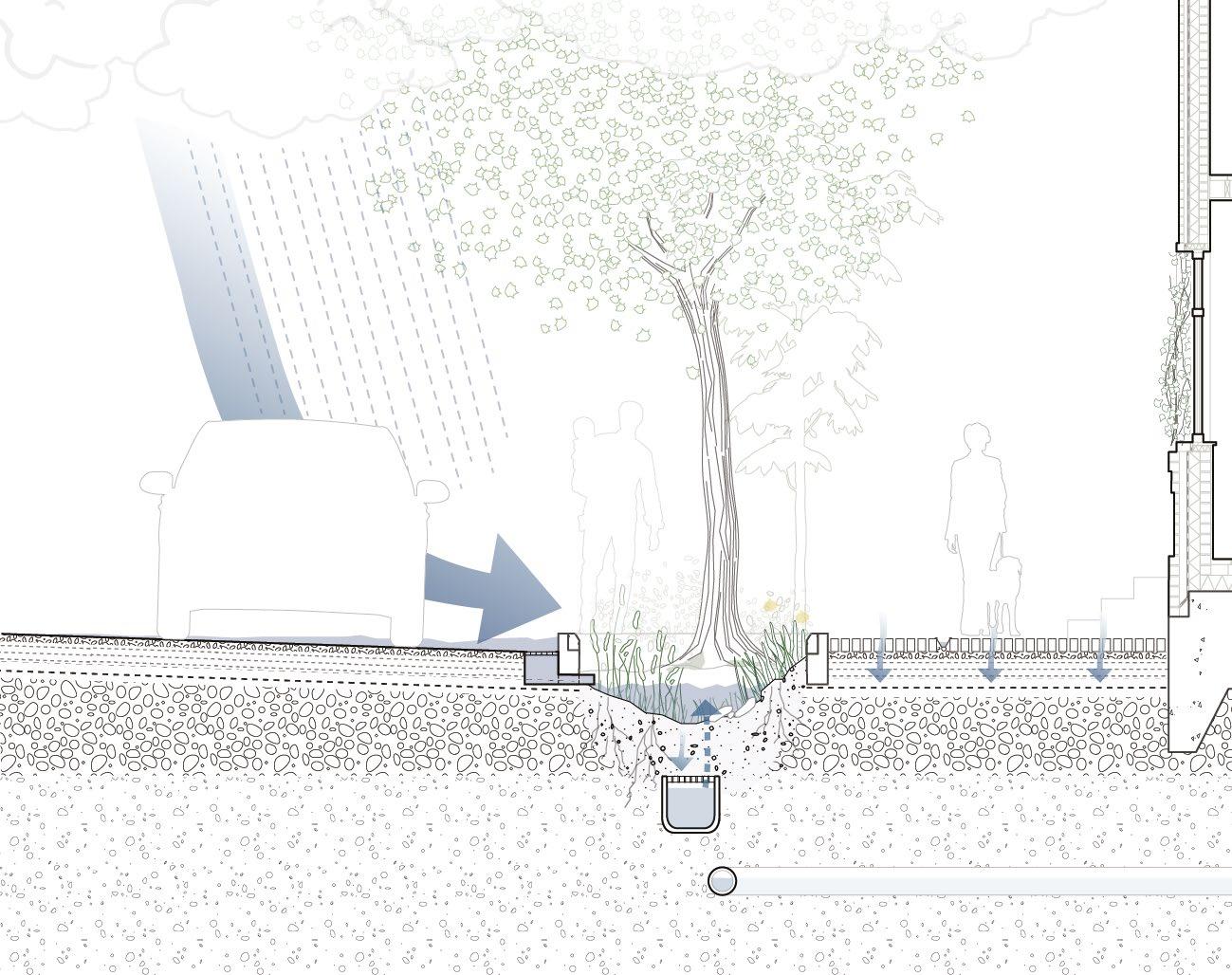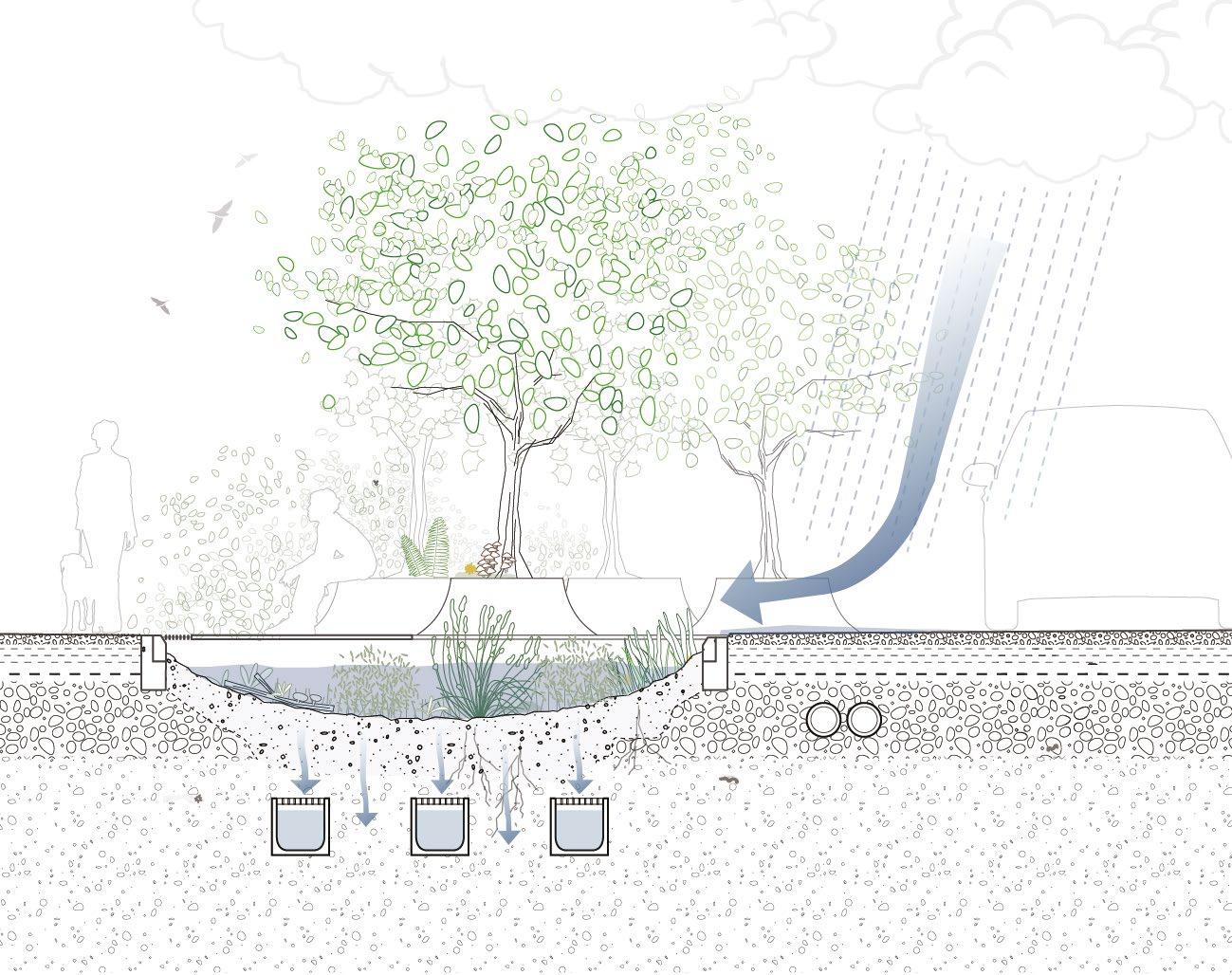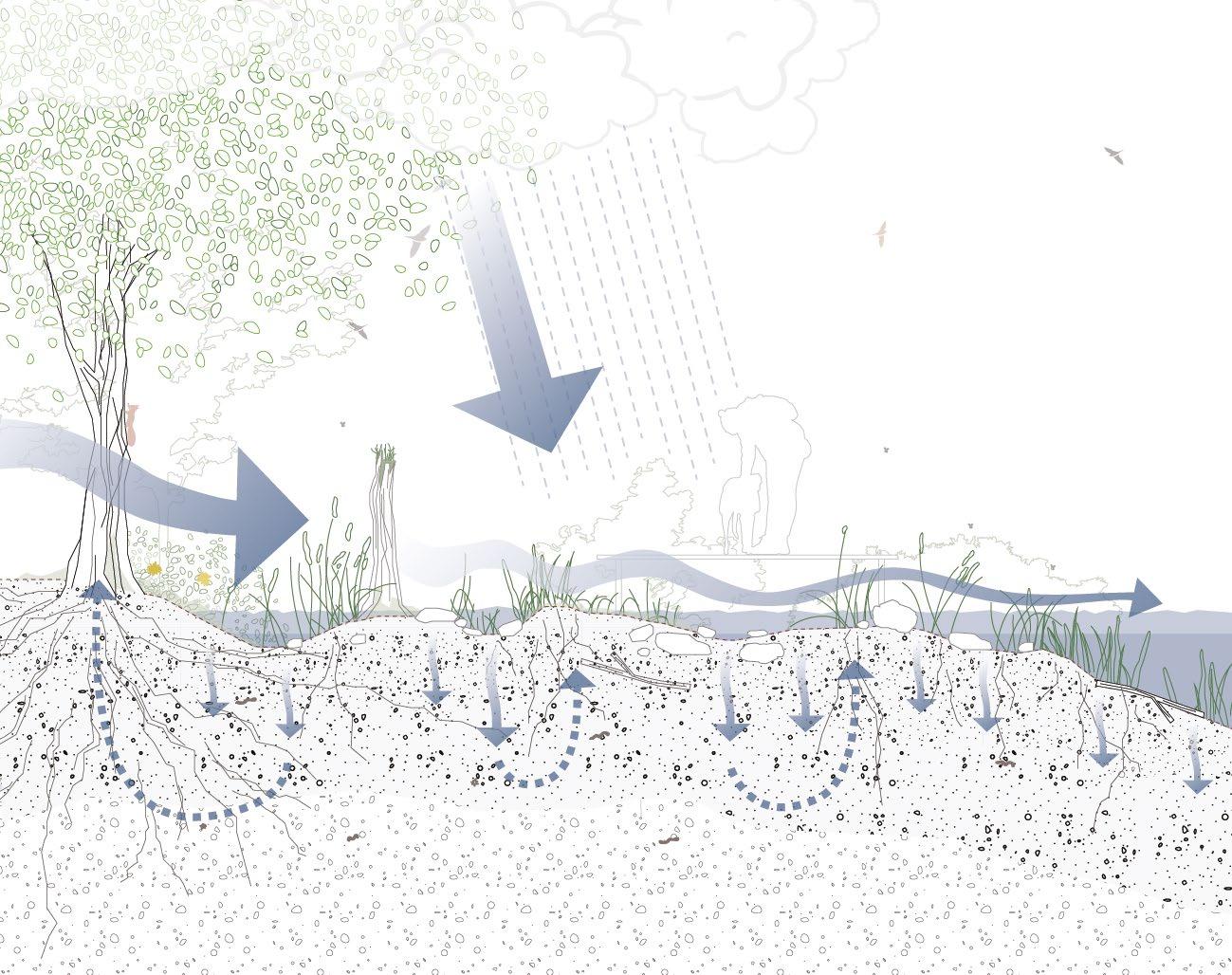Vandets Veje
Wetlands as a nature based solution to a future with more water. Rudkøbing Vejle, Langeland IVIPX00CS
In vulnerable urban zones, a network of permeable streetscapes (1) and floodable landscape interventions (2) transforms the town’s relationship with water. Instead of the current approach, where water is designed to run off urban surfaces, relocating the problem to another area, the new network in urban spaces act as a sponge, absorbing excess rainfall and guiding it toward the urban-wetland boundary, where it becomes a part of the natural water cycle.
Agriculture, too, must evolve—moving away from rigid, extractive methods toward a model that works with nature, not against it. Fields in flood-prone and former wetland areas currently struggle with reduced yields. A transition to regenerative farming restores soil health, enhancing biodiversity, and creating a protective, symbiotic zone between farmland and wetland. Within the wetland itself, farming capacity it reduced to give space to nature, but in selected areas flood-resistant crops such as wheat, reeds, and barley thrive alongside grazing cattle, ensuring that the landscape remains both productive and ecologically intact.
As water enters the wetland (3), its flow naturally slows, allowing nutrients and sediments to settle and enrich the soil. Wetland plants filter out contaminants carried from agricultural and urban runoff, safeguarding water quality and creating a thriving habitat for biodiversity. This selfsustaining ecosystem not only stores excess water for agriculture but also ensures a cleaner, more resilient water cycle—ultimately reconnecting land, water, and people in a future designed to adapt and thrive.






